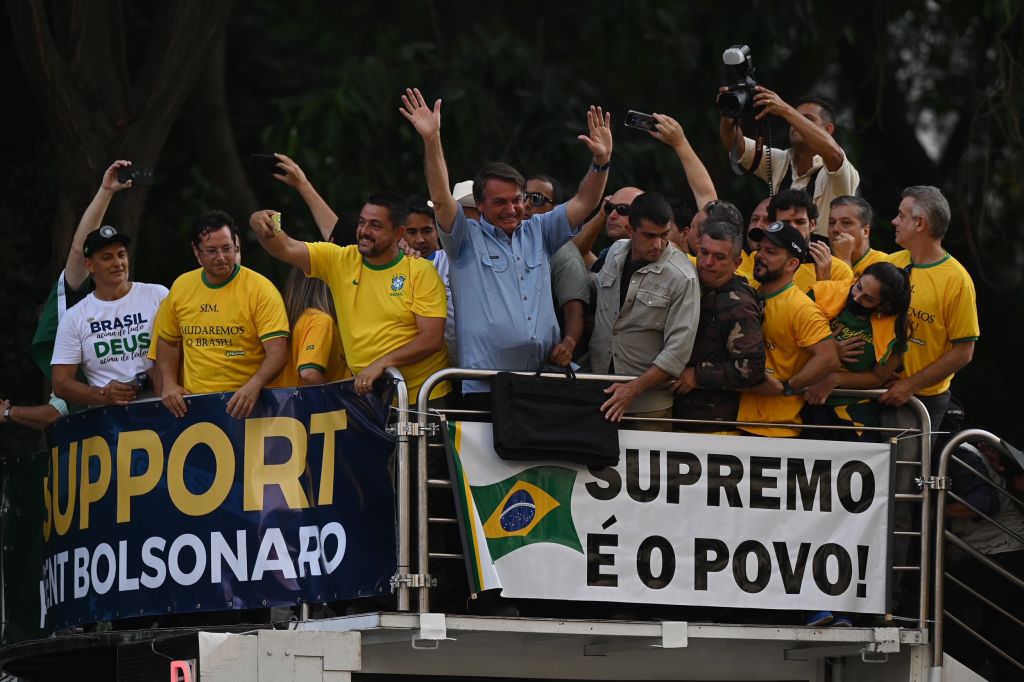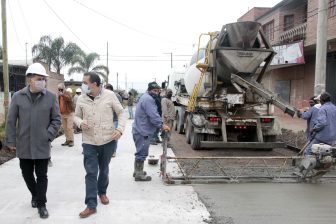SÃO PAULO – Tuesday’s protests across Brazil were a significant gamble by President Jair Bolsonaro. A low turnout would have severely undermined his claims that, despite what credible polls suggest, “the people” are still with him. Back in 1992, then-President Fernando Collor sealed the premature end of his presidency when, facing impeachment, he called on his supporters to wear the colors of the national flag and march to show their support. People showed up, but most wore black instead, in a sign of opposition — paving the way for Congress to get rid of him.
Perhaps aware of such risks, Bolsonaro and his advisors worked hard on social media to drum up support and assure a solid turnout. The final result looked like a stalemate — an outcome that significantly raises tensions in Brazil’s long-running political crisis, but gives neither side a definitive advantage. Here are five reasons why:
First, Bolsonaro succeeded in convincing around 150,000 Brazilians to listen to him in Brasília in the morning, and approximately 125,000 Brazilians to join him on Avenida Paulista in the afternoon. While organizers had promised higher numbers, it was still no small feat. Tuesday was a public holiday and came in the midst of a severe crisis shaped by increasing inflation, unemployment and a growing perception that economic recovery is unlikely to take place anytime soon. These are the factors that have dragged Bolsonaro’s popularity to its lowest level on records. But remarkably, Bolsonaro did not address any of these challenges in his speeches on Tuesday, instead focusing entirely on his attacks and threats against the Supreme Court. This reinforces how many of his followers have bought into the president’s rhetoric that he is not the one to blame for the country’s ills.
Second, Bolsonaro adopted an even more confrontational rhetoric than before, announcing to the adoring crowds that he would ignore, from now on, decisions by Supreme Court Justice Alexandre Moraes. Moraes initiated the investigation against the president and several of Bolsonaro’s allies and sons for alleged crimes involving the spread of fake news. Bolsonaro has spoken increasingly of his fear of being imprisoned – repeating Tuesday that he would choose death before going to jail. But Bolsonaro’s escalating rhetoric suggests he is confident that the parties of the legislative bloc known as the Centrão will protect him from impeachment. Whatever his motivations, Bolsonaro’s decision to embrace an all-or-nothing strategy shows there is no easy way out of what looks like the most severe constitutional crisis in decades. The Supreme Court knows that backing down would undermine its credibility, while Bolsonaro has painted himself into a corner that would make it politically almost impossible for him to accept a conviction of one of his sons. At least for now, the most immediate danger in Brazil is not a full-blown military coup — Bolsonaro is too weak for that — but permanent constitutional chaos caused by insurmountable tension between the president and the Supreme Court.
Third, given the strong likelihood that Brazilian politics will continue to revolve around the above-mentioned crisis, the path for potential presidential “third way” candidates looks even smaller than before. Candidates who need to increase their name-recognition on the national level (such as Eduardo Leite, the governor of Rio Grande do Sul) will have few opportunities to do so, making it increasingly likely that the 2022 presidential contest will come down to a two-man race between Bolsonaro and former president Luiz Inácio Lula da Silva. Indeed, there is little doubt that the only other politician in Brazil currently capable of single-handedly bringing together as many people as Bolsonaro is Lula, who has opened a large lead in the polls 13 months before the elections.
Fourth, despite some rumblings among political parties in Brasilia on Tuesday, it still doesn’t seem that the opposition has enough votes to impeach Bolsonaro. That sets a deeply worrisome precedent that may haunt Brazilian democracy for years to come. After all, any future presidents will remember that, as long as the Centrão protects them from impeachment, and as long as they can retain tacit support from the armed forces (preferably by offering them thousands of public sector jobs), authoritarian behavior will be tolerated.
Finally, while a lot depends on how the political class will react to the president’s rhetoric, the pro-Bolsonaro protests seem to take Brazil one step closer to a “January 6” scenario, a crisis similar to the insurrection and riots at the US Capitol. While a lot can happen over the next 13 months, Lula is now the clear favorite to beat Bolsonaro in October 2022. Yet should that happen, few can imagine Bolsonaro allowing an orderly transfer of power. Argentina’s transition from Cristina Kirchner to Mauricio Macri in 2015 could serve as a face-saving example — she simply stayed away from Macri’s inauguration ceremony. But considering how deep the ties are between Bolsonaro and several former advisors to Donald Trump, and the degree to which Brazil seems to have turned into a battleground of the global right, a lot suggests the worst for Brazilian democracy is still to come.









